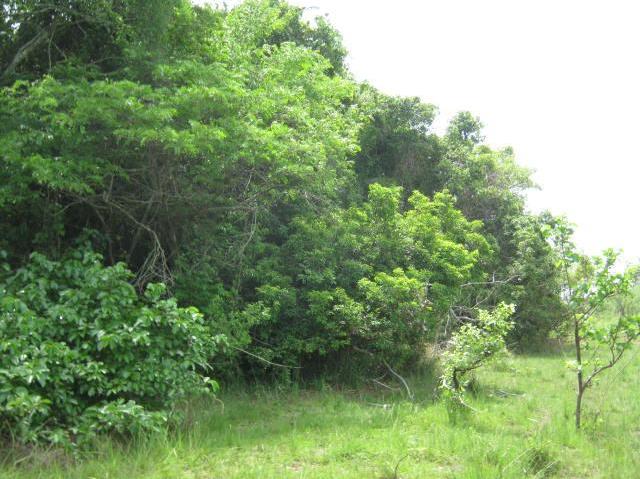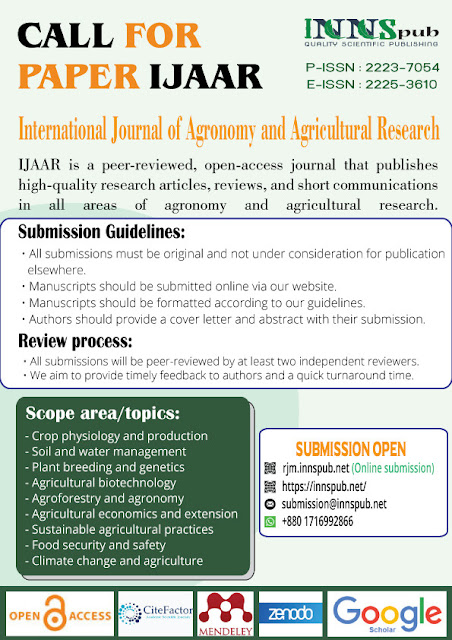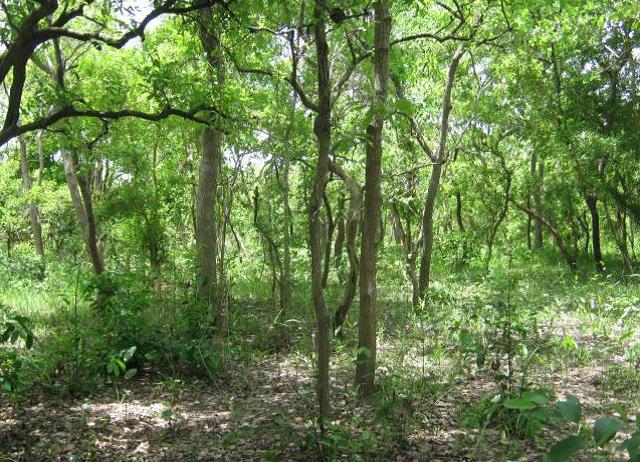Kouassi Kouadio
Henri, Kouassi Roland Hervé, Kouassi N’dri Jacob, and N’Guessan Koffi , from
the different institute of the Côte d’Ivoire. wrote a research article about, Assessing
the Impact of Banana Plantation on Flora in Niagaramadougou, Côte d’Ivoire.
entitled, Impact of the creation of a plantation of banana serves on the flora
of Niagaramadougou in the north of Côte d’Ivoire. This research paper published
by the International Journal of Agronomy and Agricultural Research (IJAAR). an
open access scholarly research journal on Agronomy. under the affiliation
of the International Network For Natural Sciences | NNSpub. an
open access multidisciplinary research journal publisher.
Abstract
This work relates to
the identification and the evaluation of the negative impacts and positive of
the creation of banana plantations serves on the flora of the natural landscape
near to the river Bandama, a locality of Niakaramadougou in the north of Côte
d’Ivoire. It comprises, the analysis of eco-climatic imbalances related on
creation, the exploitation and the end of the creation project of banana serves
plantation on the flora of the perimeter of exploitation. Based on floristic
inventories, the main aim was to characterize the impacts related to the
activities of demolition, and maintenance of plantations of Banana trees on the
flora of the localities targeted and to put forward measures of attenuation
and/or corrective. The results show that the flora of the study is rich
approximately 63 species of which 1 is with particular status. This flora is
slightly diversified and its characteristics predict the risks of imbalances
biological which can occur with short, average and long run in this locality.
The flora knows a gradual degradation related to the former activities of
exploitation. Many impacts with which the reduction of the diversity of the
exploited woody species, the fragmentation of the forests and the rarefaction
of some species in particular, the lianas were identified in this locality. The
linked activities with the project have been be potential sources of negative
impacts on the flora and have contributed to destroy it to a significant degree
if the flora of this locality.
Read more : Exploring Freshwater Algae in Kalpani Stream, Mardan, Pakistan | InformativeBD
Introduction
The current context of
sustainable development with its corollaries (fast urbanization, demography
increase, land pressure etc.) breaks sometimes the balance within the
ecosystems; in particular those which are fragile and which are sometimes the
object of overexploitation. Moreover, the natural resources available on planet
are born, evolve and become exhausted over the years. In many African
countries, in particular in Côte d'Ivoire, the problematic, population
growth-availability of the natural resources is deeply posed. Also, the land
pressure is felt it in a gradual way. The problem of land rural moreover into
frequent, sometimes source of fatal conflicts, is one of the immediate causes
of the land pressure. Face to these problems more and more, solutions of
durable or integrated spaces and natural resources management are recommended
to prevent eco-climatic imbalances. The evaluation of the impacts of the
activities undertaken during the creation of the banana serves plantations in
the locality of Niakaramadougou is a subsequent phase with the realization of
the project in order to put forward palliative measures of the positive impacts
and negative on the flora, the environment, fauna and on the whole of the
populations living on the perimeter. From the floristic point of view, the
perimeters of exploitation belong to the Sudanese field. One meets the dry
dense forest there, savanna raised or timbered, the bordering formations of the
waterways, marshy formations etc. nowadays, these at one time timbered vegetable
formations, are seriously started and are frequently devastated by fire at
certain places. One notes also the presence of pieces of food crops (rain rice,
corn, yam), and of the pastures and the points of breeding of pets. The
problems of the development, with its corollaries (destruction of many
components of nature) require the taking into account of the recommendations of
many researchers whose activities are directed towards the safeguard of the
biodiversity. It is inter alia Kouassi et al. (2013), Baker et al. (2001), etc.
These recommendations aim compensating for or at correcting the damage caused
by the man with the environment. Actually, they are the human beings and the
animals which are mainly exposed with the consequences of much destruction
caused within nature. Over the years, the environment and living environment
become increasingly invaluable for the survival of the living beings. Its
management must thus from now on integrate realities of the medium of kind to
support the life in all its forms.
Reference
Alexandre DY. 1989. Dynamique
de la régénération naturelle en forêt dense de Côte d’Ivoire. Etudes et
Thèses, Orstom Paris, 102.
Aubréville, A. 1957. A
la recherche de la forêt en Côte d’Ivoire : bois et forêts des tropiques, n° 56
et 57:47P.
Ettien DT. 2005.
Potentiels de régénération des essences forestières commerciales par la
germination des graines, dans la forêt classée du Haut-Sassandra (Centre-Ouest
de la Côte-d’Ivoire). Thèse de Doctorat 3è cycle, U.F.R. Biosciences,
Université Abidjan-Cocody, Abidjan, Côte d’Ivoire, 259 p.
Fournier A., Floret Ch.
et Gnahoua G M. 2001. La jachère en Afrique tropicale. Synthèse
bibliographique. Symposium international sur les jachères en Afrique tropicale
Eurotex Paris, coll : colloques et séminaires, pp. 123-168.
Gautier L, Chatelain,
CV. et R. Spichiger. 1994. Presentation of a releve methode for vegetation
studies based on high resolution satellite imagery In: comptes rendus de la
treizième reunion plénière de l’A.E.T.F.A.T., Zomba malawi. Nat. Herb. Bot.
Gard. Malawi. Vol. 2: 1339-1350.
Guillaumet JL. et
Adjanohoun E. 1971. La végétation. in : “Le milieu naturel de
Côte d’Ivoire”. Mém. ORSTOM, Paris, n 50 : 161-262.
Kouame NF. 1998. Influence
de l’exploitation forestière sur la végétation et la flore de la forêt classée
du Haut-Sassandra (Sud-Ouest de la Côte d’Ivoire). Thèse de Doctorat de 3e cycle,
UFR Biosciences, Univ. Cocody-Abidjan, Côte d’Ivoire, 227 p.
Kouadio K, Kouassi KE,
Kouame NF, Traore D. 2007. Impact de l’éclaircie sur la régénération
naturelle des essences principales, dans la forêt classée de Bossematié (Côte
d’Ivoire). Sci. Nat. Vol. 4(1) : 27-35.
KOUASSI KH, TRA-Bi FH,
KOUASSI RH. 2013. Impacts of the iron ore extraction on the flora of
the localities of Bangolo and Logoualé west of Côte d’ivoire. International
Journal of Advanced Research 1(9), 167-176.
Mitja D. et H. Puig. 1993. Essartage
culture itinérante et reconstitution de la végétation de la jachère en savane
humide de Côte d’Ivoire (Booro- Borotou). In : Ch.
Floret et G Serpantié (eds), la jachère en
Afrique de l’Ouest, Collection : Colloques et Séminaires. ORSTOM, Paris,
377-392.
Monnier Y. 1983. Hydrologie
végétation, les sols. In Jeune Afrique, Atlas de la Côte d’Ivoire., 2e édition;
pp 10-21.
Shannon & Weaver. 1948. The
mathematical théory of communication, Urbaka un. Press Illinois. Uicn.
2009. IUCN Red List of Threatened Species. www. iucnredlist.org.
Yossi H. 1996. Dynamique
de la végétation post-culturale en zone soudanienne au Mali. Thèse de
Doctorat, Population environnement, ISFRA, Université de Bamako, 154 p.












%20in%20full.JPG)


0 comments:
Post a Comment